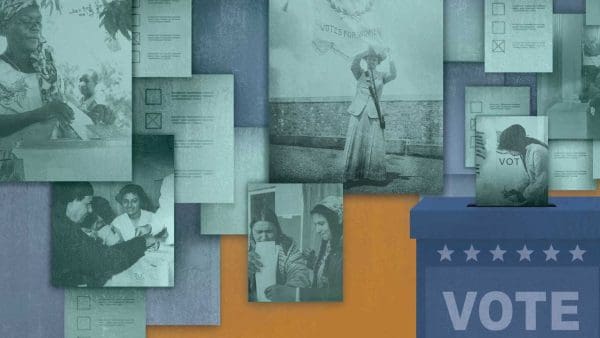On July 1, 1997, the United Kingdom ended its 156-year colonial rule of Hong Kong, making the territory and its 6.5 million residents a “special administrative region” of China that, under the One Country, Two Systems policy, would keep its currency, capitalist economic system, legal system, and civic freedoms for the next 50 years.
One question, for both residents and outsiders, was whether Hong Kong would pull China toward the freedoms of the West, or whether China would push Hong Kong in a more restrictive direction.
In her new book, A Free Press, If You Can Keep It: What Natural Language Processing Reveals About Freedom of the Press in Hong Kong, Giovanna Maria Dora Dore, associate teaching professor, provides some unsettling answers.
Analyzing the papers
For the book, Dore analyzed the language in 4,522 news articles from six major Western English-language newspapers, and two Hong Kong English language newspapers, to see how they covered civic protests in Hong Kong between 1998 and 2020.
Large-scale civic demonstrations have long been a way for Hong Kong residents to express dissatisfaction with their government. After the 1997 handover, demonstrations became more frequent and attracted more participants.
Civic demonstrations are an expression of freedom of speech, Dore says, and media accounts of them were important indicators of press freedom that could be seen by the government and the people of Hong Kong as a way to encourage or discourage more protests.
Wording counts
Dore wanted to know: How extensively were the actions covered? Was context included about the reasons for the protests? Were they characterized as violent and illegal riots, or as legitimate forms of political discourse? Did coverage of protests change between 1998 and 2020, and if so, how?
Her research found that the English-language, Hong Kong-based newspapers—the China Daily and the South China Morning Post—covered the protests more frequently and in more detail than Western-based newspapers, but used the contextualizing terms “democracy” and “freedom” less frequently.
She also found that the Hong Kong based papers avoided certain words. “In their coverage, these newspapers negatively characterized the protests, for example saying they were bad for Hong Kong. However, they don’t talk negatively about the protesters to avoid being accused of curtailing freedom of speech. By not labeling the protesters as rioters or terrorists, they shield them from the harsh penalties that rioters face under Hong Kong laws,” says Dore, associate director of the Program in East Asian Studies. “The Western newspapers more often explained the use of radical tactics and violence as the most effective way for protesters to be heard domestically and internationally.”
Searching for keywords
For the computational analysis, Dore collaborated with doctoral candidate Arya D. McCarthy of the Center for Language and Speech Processing in the Whiting School of Engineering, and James A. Scharf, a researcher focusing on human language technology at the Johns Hopkins University Applied Physics Laboratory.
Dore and her co-authors limited the analysis to print rather than online editions of these newspapers, and articles of at least 300 words that were about the protests, not ones that mentioned them in passing.
The researchers developed machine learning programs to search for keywords like confrontation, crackdown, democracy, freedom of speech, resistance, rights, riot, rule of law, and terrorism; and to categorize the articles by whether they focused on the financial implications of the protests, Hong Kong’s relationship with the mainland of China, public violence, or activism and democracy.
Dore suggests that newspapers in Hong Kong have grown more cautious between 1998 and 2020. “Many of the articles from the English-language Chinese newspapers offer nothing more than painfully step-by-step descriptions, like a cookbook,” she says.

Many of the articles from the English-language Chinese newspapers offer nothing more than painfully step-by-step instructions, like a cookbook.”
—Giovanna Maria Dore Dore
“They write, ‘The protests started at 9 a.m., people were wearing this kind of clothing.’ There is a description, but there is no discussion of why protesters were investing in those activities. This technique allows the journalist to write about something without expressing a point of view in favor of or against the topic. The book offers empirical evidence of how the boundaries of press freedom have changed in Hong Kong, and that freedom of speech has effectively diminished over the last two decades.”




